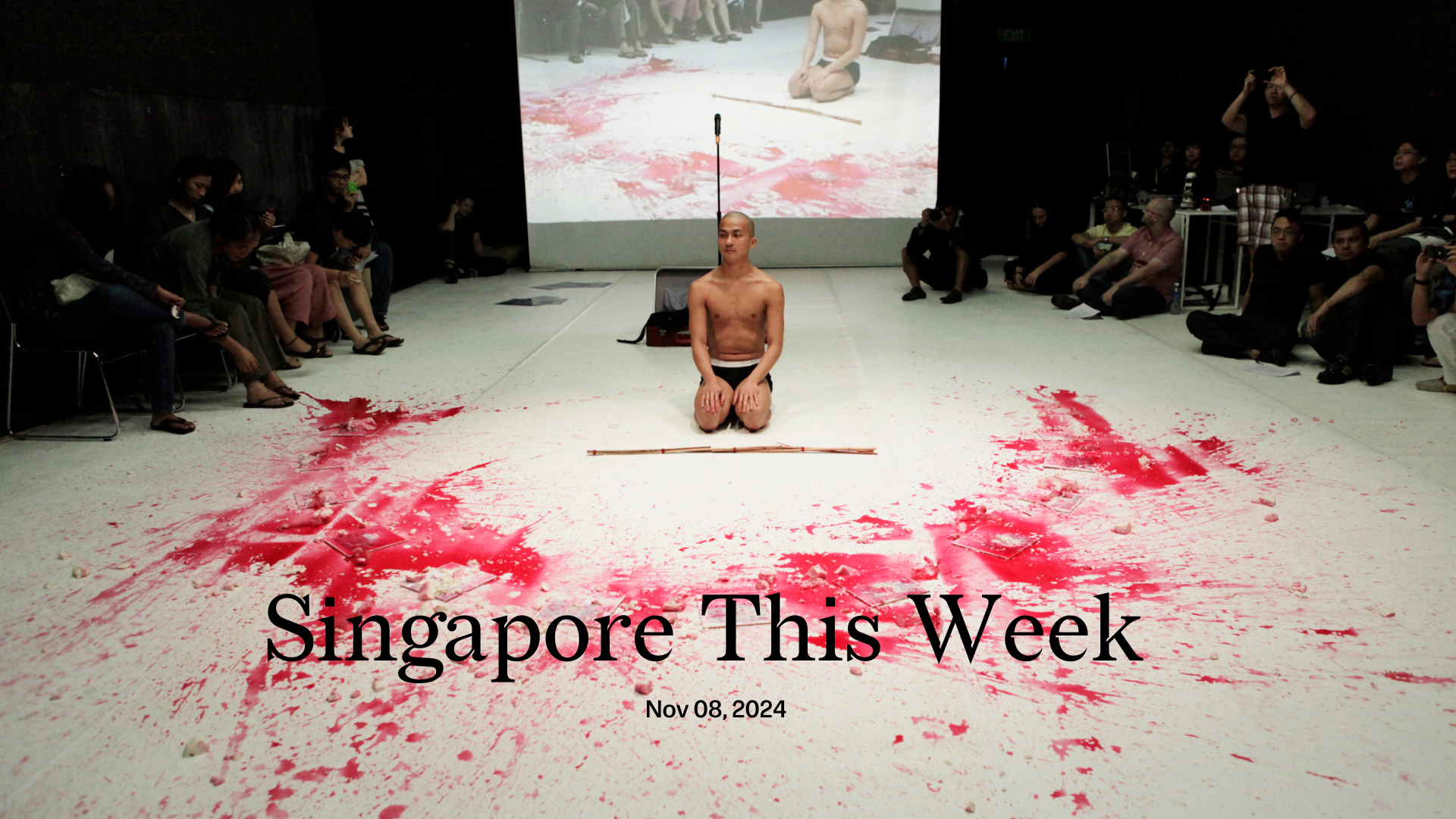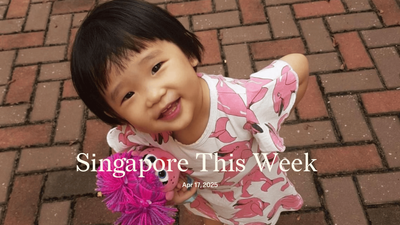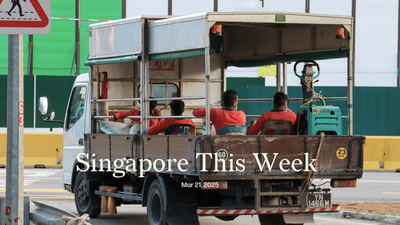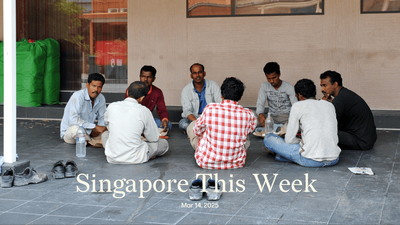Politics: The harbour in the back
Hougang, the “harbour in the back” in Chinese, is the only constituency in independent Singapore to have spent more time under the opposition than under the ruling People’s Action Party (PAP). Low Thia Khiang of the Workers’ Party (WP) first won the seat in 1991, the thin end of a wedge that has seen the party broaden its electoral mandate to adjoining Aljunied and Sengkang. On November 3rd, the 67th anniversary of the party’s founding, it released “后港 Hougang: The Documentary”, which combines fascinating archival photographs, contemporary footage and interviews to depict the rich socio-cultural and political history of Singapore’s north-east. By examining the migration of Teochews from southern China to Singapore, the language policies that saw English and Mandarin taking precedence over dialects, the shift of homes from kampungs to HDBs, and the evolution of Singapore’s political environment from the 1950s till today, the film is an important contribution to our national history. Interviewees include Mark Frost, associate professor of public history at the University College London, Png Eng Huat, a former member of Parliament for Hougang, Willin Low, chef and founder of Wild Rocket, and Jom’s editor-in-chief.
Some further reading: “From Punggol with love: tracing the origins of the Hougang Spirit” by Kelvin Yap.
Society: A Li walks into a pasar malam
In October, Li Hongyi, director of Open Government Products (OGP), allegedly quit as director of SingPass. Last week, what appears to be his long resignation message was leaked via The Online Citizen and other platforms. According to insiders, Li, son of Lee Hsien Loong, senior minister, and Ho Ching, former boss of Temasek, got the role, and then relinquished it in less than a year. (GovTech, OGP’s parent, and Li did not respond to requests for comment.)
In the message, Li was scathing of higher-ups, criticising their relentless cost cutting and seeming indifference to his wishes. He questioned their “erratic direction”, and alluded to “deep security and reliability issues” at Singapore’s national digital identity initiative—all of which should be of great concern to citizens. “[I]t feels less like a professional discussion and more like haggling at a pasar malam,” he wrote of his daily work negotiations. That a Lee scion mingles with the hoi polloi at night markets might surprise some, though his bosses and others at GovTech probably won’t be pleased. OGP is already seen by many there as a sort of spoiled sibling. Its stars apparently draw obscene salaries and are afforded special treatment. This debacle will serve only to worsen relations within.
Some online have wondered if this resignation is in any way connected to politics, and Li’s possible baptism at the next general election, due by November 2025, but there is no evidence to support this. Incredibly, Singapore’s mainstream media has yet to report this news, so vital to the management of digital security in this country. Instead, it continues to dedicate acres of real estate to 38 Oxley Road and the government’s ongoing debate with Lee Hsien Yang. In the marketplace of Lees/Lis, some are more protected than others.
Society: Model migrant workers
“Presenting our stunning models…” announces charity ItsRainingRaincoats (IRR) on Instagram. “Each shot showcases their unique style and charisma, bringing this [clothing] collection to life.” There’s no denying it, the migrant workers look fantastic in the outfits they’re wearing—their poses and expressions offering the viewer a glimpse of their personalities. But if you’d only seen the photographs on social media, and not read The Straits Times (ST) article, you’d have no idea who each of them are, where they are from, what brought them to Singapore, how long they’ve been here, and at the crux of it all, what their personal stories are. You will, however, be informed about who sponsored the clothes, shoes and bags, as well as the names of the hairstylist, photographer and makeup artist.
On the surface, the new IRR-helmed modelling project seems well-intentioned—fashion as a vehicle for self-expression and individualisation. The 10 employees who participated in the photoshoot were able to keep the shoes and bags that they wore, but reportedly not the clothes. Furthermore, Madhurajan Prakash, Siddha Chiranjit, Chandra Sekar and Sarker Md Alamin, who ST interviewed, appeared happy and chuffed. “Now, becoming a star. Everyone knows Sarker,” said the material controller at an oil and gas firm who’s from Bangladesh, and always wanted to go into acting or advertising.
The project isn’t “just about fashion and good looks”, the charity explains, it’s about “celebrating individuality, seeing beauty in everyone, challenging assumptions, and shattering stereotypes.” The “whole idea” of the project is “to showcase them as individuals”, Dipa Swaminathan, IRR founder, told ST, adding that she hopes they can also become brand ambassadors for fashion labels. “Imagine if migrant workers see one of them featured in an ad in Singapore,” she said. “Just that morale boost is priceless, that one of them could be accepted in the community in this way.”
IRR notes that “most of us” see migrant workers as “a human mass...indistinguishable from one another” when they’re in the same uniforms and helmets on worksites. It asks, “What if?”: what if we saw migrant workers differently; what if they had other opportunities; what if their reality was different; and what if their story could be retold?
While it’s important to change societal perceptions of this disadvantaged and disenfranchised group—transgressing social classes through fashion is nifty—there’s always the risk that such projects help us gloss over persistent structural injustices. We can both marvel at their style; and remember that they represent over 400,000 migrant workers in the construction, marine shipyard and process sectors, who live with systemic problems on a daily basis, including workplace safety, poor living conditions, discrimination and exploitation.
History weekly by Faris Joraimi
Chingay, the annual street parade held around the Lunar New Year, will be jointly nominated by Malaysia and Singapore in March 2025 for inclusion in UNESCO’s list of Intangible Cultural Heritage (ICH). This is Singapore’s second multinational ICH bid, following its nomination of the kebaya together with Brunei, Malaysia, Indonesia and Thailand. Outside Singapore, Chingay parades are staged in Johor Bahru and Penang, and differ in each city. Ours is organised by the People’s Association, a statutory board with close ties to the PAP that organises grassroots events and activities. Performances, drawn from a variety of cultural traditions, are meant to also stage Singapore’s “multiracialism”. This is similar to the Chingay parade in Penang, which is “multicultural and secular”, but organised by the Penang Chingay Association, founded 50 years ago by Chinese cultural leaders. Johor Bahru’s Chingay has been held by the Johor Bahru Old Chinese Temple since 1870, and brings together five Chinese groups—Hakkas, Hainanese, Teochews, Cantonese and Hokkiens—in one joint spectacle.
Of these, perhaps only the Johor Bahru Chingay stays true to the parade’s origins as a sacred procession held since the 19th century to honour deities revered by southern Chinese migrants to the Nanyang. Like Johor Bahru, Singapore’s Chingay was also once associated with an important, old temple: Thian Hock Keng. However, Confucian reformers banished this tradition in the 1900s, according to scholar Daniel P. S. Goh. Our current incarnation of Chingay dates only to 1973, when the Singapore government revived it as compensation for the ban on firecrackers and street celebrations during the Lunar New Year. Like all of Singapore’s best and grandest ideas, this was supposedly mooted by Lee Kuan Yew himself. It had nothing more to do with gods and temples. The word “chingay”, the vernacular form of qian, or praying for peace, became translated officially as zhuangyi (art of costume, or dressed for a masquerade). Chingay became a state-supervised, multicultural performance. “Cleansed of religious meanings,” wrote Goh in 2013, “Chingay is appropriated as narrating the nation’s coming of age, with the state as protagonist in the narrative.” The National Heritage Board makes the case that Chingay attests to the “adaptability” of “living heritage”. Called back to life, perhaps, in an acceptable form.
Arts: Untitled (2025, fringe festival, dimensions variable)
It’s M1 to none for the M1 Singapore Fringe Festival. Its title donor, the Singapore-based telco, has decided to end financial support for the edgy festival after its 21st edition in January. The Fringe, a mainstay on the arts calendar for the past two decades, is one of the rare spaces afforded to emerging artists and experimental forms. It doesn’t shy away from challenging material, be this migration or mental health, wage inequality or war; was one of the first to introduce accessibility structures such as captioning and sign language interpretation; and has kept ticket prices low at S$38 a pop, still among the most affordable here. The festival regularly programmes work in intimate spaces and for small audiences, which means that it can’t rely on ticket sales to recoup costs. Deep-pocketed private donors are crucial in keeping indie festivals like this going; the Fringe costs about S$230,000 a year, of which M1 contributes S$100,000. “Without a title donor, the Singapore Fringe Festival may completely cease to exist,” said Alvin Tan, artistic director of The Necessary Stage, the theatre company that organises and curates the festival. (When contacted by Jom, M1 declined to comment about the reasons for its withdrawal.) M1 had previously affixed its name to the M1 Chinese Theatre Festival (2011–2017) and M1 Patch! A Theatre Festival of Artful Play (2018–2021), and sponsored the Fringe from its inception in 2005. The Necessary Stage has since started a Fringe Festival Fund and hopes to raise S$50,000 to keep the festival afloat.
Loo Zihan, Singaporean artist and researcher, is one of the over 1,000 artists and groups that the Fringe has commissioned and presented. In 2012, he reenacted Josef Ng’s “Brother Cane” (1994), where the performance artist whipped pieces of tofu and snipped off his pubic hair to protest the authorities’ entrapment and caning of gay men in the 1990s. The infamous original work prompted a maelstrom of moral panic, resulting in the eventual proscription of the licensing and funding of performance art here for a decade; the new work came under heavy public and state scrutiny. The Fringe didn’t flinch, and commissioned two more pieces by Loo on the prosecution and persecution of queer life in Singapore. Loo told Jom that the Fringe was unwavering in its support of his “fledgling creative instincts” and made sure he wasn’t “overwhelmed by regulatory requirements” around the licensing and classification of his work. “When I create work for the fringe festival, I feel a certain ease,” he said, “like reconnecting with an old friend.” Let’s hope this friendship doesn’t fizzle out.
Arts: Unrated (2024, experimental film, 104 minutes)
Two people sit in an interrogation room, squaring their relationship with each other. There are long, uncomfortable pauses. Wispy curls of cigarette smoke fill these gaps in conversation, seeming to snag on the gorgeous, granular texture of the black-and-white film grain. Ants and spiders skitter across cracks in the concrete. Every click and whir of the reel-to-reel recorder feels like a sound you can touch. Except you won’t get to. Daniel Hui’s hypnotic psychodrama, “Small Hours of the Night”, was meant to have its local premiere at the Singapore International Film Festival (SGIFF) later this month. But it’s just been “refused classification” by the Infocomm Media Development Authority (IMDA), which essentially amounts to a ban since it now can’t be screened or distributed here. The IMDA, Ministry of Law and the Attorney-General’s Chambers have deemed it “likely to be prejudicial to national interests”. On its Films Classification Database, the IMDA describes the film as one that “revolves around discourses about the impact of Singapore’s judiciary on personal lives”. One of these cases is the 1980s Tan Chay Wa tombstone trial, where the senior official from the Malayan National Liberation Front, an arm of the Communist Party of Malaya, fled north to dodge Singapore’s communist dragnet. He was later arrested in Malaysia and sentenced to death for possessing a pistol and ammunition. His brother, Chu Boon, eventually spent a month in jail for the revolutionary inscriptions he had engraved on Chay Wa’s headstone, including a poem the latter wrote just before he was hanged.
While the film draws from actual cases, it’s less a tinderbox of communist conspiracy, more a rumination on the malleability of historical memory. But the state has always been tetchy about the faintest whiff of revisionist history, and regularly deploys banal bureaucratic machinery as a guise for overt censorship. Consider Tan Pin Pin’s “To Singapore, With Love” (2013), a clear-eyed and tear-jerking documentary featuring interviews with political exiles, which was also refused classification because it might “undermine national security”. But Hui hasn’t been daunted by this. The award-winning filmmaker told the Mekong Review: “I’m not interested in criticising the state. I’m more interested in how we take that powerlessness into all areas of life.”
SGIFF maintains that “Small Hours of the Night” remains part of its Official Selection in the “Undercurrent” strand that platforms experimental, genre-bending work. Thong Kay Wee, the festival’s programme director, called the film “gripping” and “beautiful”, and decried its censorship. Hui will continue to participate in other festival events, including the gossipy forum “Mildly Offensive, Sometimes Accurate” that promises drama, tea, and “behind-the-scenes anecdotes that capture both the highs and lows of local filmmaking”. Well, audiences, you know what to ask.
Some further reading: Jom’s arts editor Corrie Tan interrogates IMDA censorship in “The death of the critic, or why it’s really hard to write a bad review in Singapore today”.
Tech: Tokenising cross border payments
The spate of recent scams has tarnished cryptocurrency’s shiny image but the blockchain technology it rests on remains sound. It’s highly secure, and has the potential to reduce international transaction costs in traditional banking. All manner of assets, including physical ones like art, gold, or corporate debt/equity, can be expressed and traded as digital tokens on the blockchain, in a process known as asset tokenisation. What’s more, these assets can be fractionalised such that multiple people can own a painting, for example, with ownership details stored in tokens that cannot be tampered with.
The Monetary Authority of Singapore (MAS) has recently announced comprehensive plans to advance tokenisation in financial services, “including forming commercial networks to enhance liquidity”, “developing…market infrastructure”, “fostering industry frameworks for tokenised asset implementation”, and “enabling access to common settlement facilities…”. These efforts are underpinned by Project Guardian, which has brought together over 40 financial institutions and policymakers across seven jurisdictions to conduct industry trials on asset tokenisation in capital markets.
One instance is a partnership between OCBC Bank and Ant International where cross-border fund settlements between Malaysia and Singapore will use tokenised deposits that are integrated with AI and advanced encryption. This is an important step towards digitising financial assets, which could transform how institutions manage liquidity and conduct global transactions. The partnership between a traditional bank and a fintech giant also showcases the growing collaboration between local players, new and old. Furthermore, focusing on real-time, round-the-clock payments across the causeway addresses a specific regional need, potentially setting a precedent for similar solutions across South-east Asia. The ongoing experimentation with blockchain technology reflects policymakers’ hopes that it could transform global asset management and transfer processes. This in turn could lead to completely new jobs and companies in the banking industry.
Tech: Razer edges into financial services
Razer is one of Singapore’s most valuable technology companies, with its sleek gaming apparel, high-performance gaming hardware, software, and services translating into a S$3.43bn market cap in 2022, when it went private.
Razer Gold, the company’s virtual credit platform, has been a significant part of its ecosystem, allowing gamers to purchase in-game content for 50,000 entertainment and gaming titles. The recent in-principle approval from the MAS for a Major Payment Institution licence marks a pivotal moment in its evolution. By obtaining this licence, Razer Gold can now offer a wider range of payment services, including account issuance, money transfers, and e-money issuance. This has the potential to open up new revenue streams and strengthen its position in the digital economy, while potentially attracting a broader user base beyond core gamers. Razer’s move aligns with the growing intersection of gaming and fintech, as well as the increasing digitisation of financial services. For instance, its gaming competitor, Garena (part of Sea Group), also owns a fintech company, SeaMoney, which has been pursuing banking licences across the region, including in Thailand and Malaysia.
If you enjoy Jom’s work, do get a paid subscription today to support independent journalism in Singapore.







